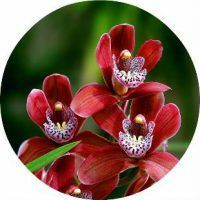
Among the flowers, orchids take a special place. To date, more than 30 varieties of these plants have been recorded. They differ in color, shape of buds, leaves. There are truly incredible types of flowers. We suggest considering a list of orchids that can be planted at home. There are also photos of these amazing flowers.
- Orchid Aganiziya
- Orchid angraecum
- Orchid Beallara
- Orchid Bifrenariya
- Orchid brassavola
- Orchid breaststroke
- Orchid Vanda
- Orchid Grammatofillum
- orchid Dendrobium
- Orchid Zigopetalum
- Orchid Cumbria
- Orchid catasetum
- Orchid Cattleya
- Orchid Lelia
- Orchid lycaste
- OrchidLudesia
- Orchid Makoudes
- Orchid Miltassia
- Orchid Miltonia
- Orchid Odontoglossum
- Orchid Oncidium
- Orhidia Pafioadiplum( Boot)
- Orchid The Ghost. Polyester
- Orchid Phalaenopsis
- Orchid Fragmipedium
- Orchid Cologin
- Orchid Cymbidium( classical)
- Orchid Cymbidium( black)
- Orchid Epidendrum
Orchid Aganasia
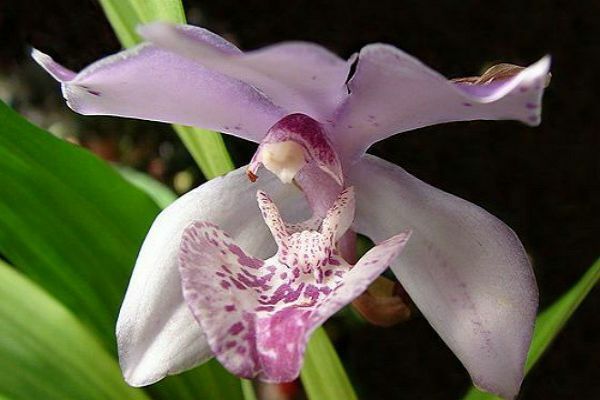
On the small foot of this flower, ellipsoidal leaves are arranged. On the plant at the same time, about 10 flowers can be formed. They have a star-like shape. Flowers can have a different shade, beginning with blue and ending with purple. For orchids, this is a fairly rare coloring. This kind of plant has no smell.
to the table of contents ^Orchid Angrekum
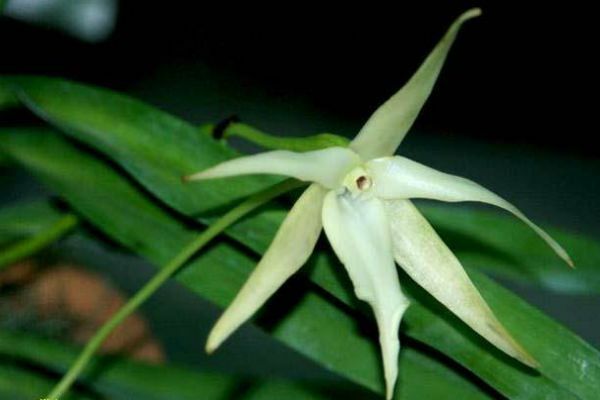
Unlike Aganasia, the Angrekum orchid is endowed with an amazing aroma. The plants are sickle-shaped, densely arranged fleshy leaves. The plant blooms without a large cluster of stems. It is very rare when more than three star-like flowers appear on one orchid. Their diameter usually does not exceed 8 cm, and the color is predominantly white. On the surface of the leaves and flowers of the Angrekum orchid there is a wax coating.
Orchid Bellar
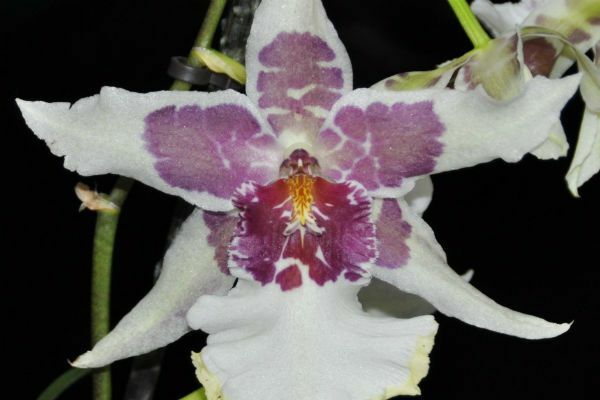
Hybrid plant with a peduncle reaching half a meter. It grows out of the sinuses of elongated leaves of dark green color. The number of star-shaped flowers on one plant can reach 15 pieces. Their maximum diameter is 20 cm. Color of flowers is various. The lip and sepulchral orchids have an original pattern. Simultaneous formation of two peduncles is possible.
to the table of contents ^Orchid Bifrenaria
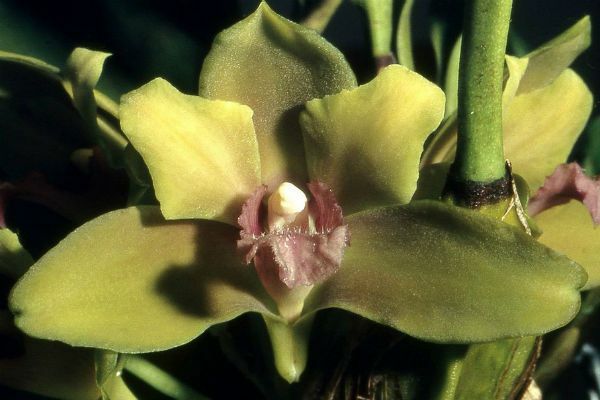
This name was given to the plant due to the structure of the flower. From Latin it means "two bridles".A small orchid Bifrenation looks like a tetrahedral pseudobulb, from which 1-2 lanceolate leaves grow. It is painted in green shades. From psevdobulby grows one tsvetonos. It shows 1-3 fleshy flowers, the diameter of which can reach 8 cm. Their color varies from white to yellow with purple or pink veins. Has a specific smell.
to the table of contents ^Orchid of Brassavola
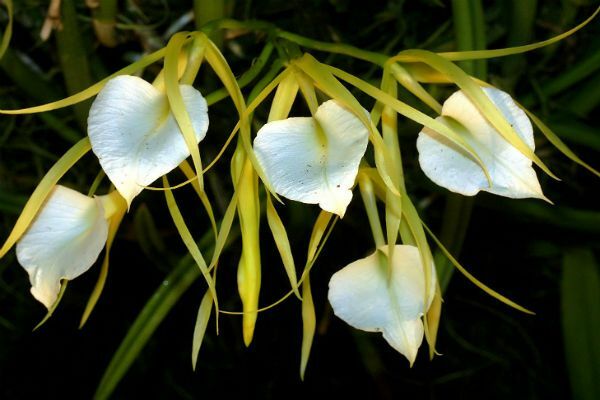
The flower is named after Antonio Brassavola, a Venetian botanist. Its fleshy leaf grows from a bulb of cylindrical shape. Tsvetonos throws star-like flowers, the number of which can reach 6 pieces. Their color can be greenish, white, yellow. The fragrant smell of the flower can be heard closer to the night. Thanks to him, these flowers are called "Lady of the Night".
Orchid Brassia
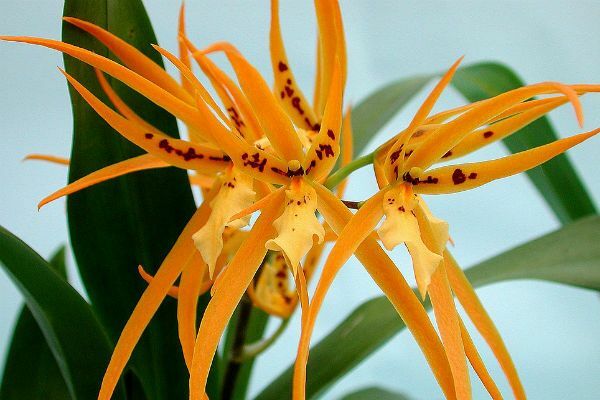
Due to its unusual appearance these flowers are called "spider orchids".Its 1-2 lanceolate leaves appear from rather large pseudobulbs. When they finish their development, they die, and their place is occupied by a new bulb. At the same time, up to 15 flowers with rather narrow petals can appear on the plant. In some species of orchids, they are almost threadlike. To their coloring yellow-brown-green contrast contrasts are added.
to the table of contents ^Orchid Vanda
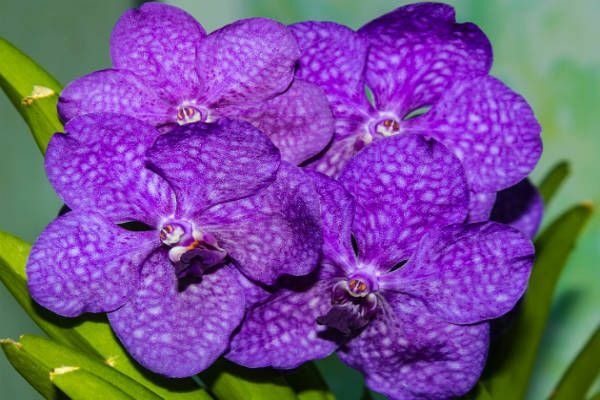
This flower often has one sheet, the shape of which is similar to a fern. From its sinuses appear peduncles, on which grows 2-15 flowers. At the same time, up to 4 peduncles may be present on one plant. First they have a small size and a pale appearance. After a couple of days they become bigger and more saturated. Their color is quite diverse.
Orchid Grammatophillum
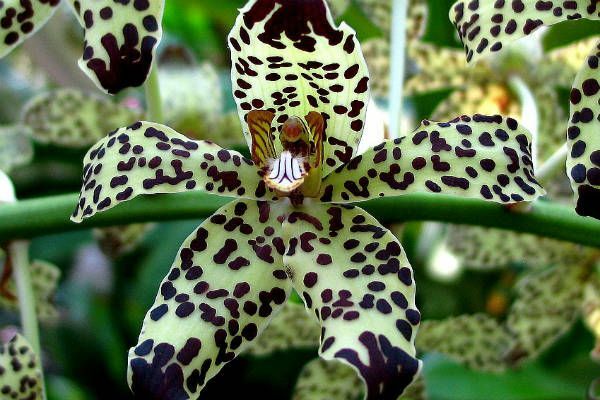
This plant is characterized by a long peduncle with many flowers. It is formed at the base of the pseudobulb. The length of the branched peduncle usually exceeds half a meter. Color of flowers is yellow-green-brown, non-uniform.
to contents ^Orchid Dendrobium
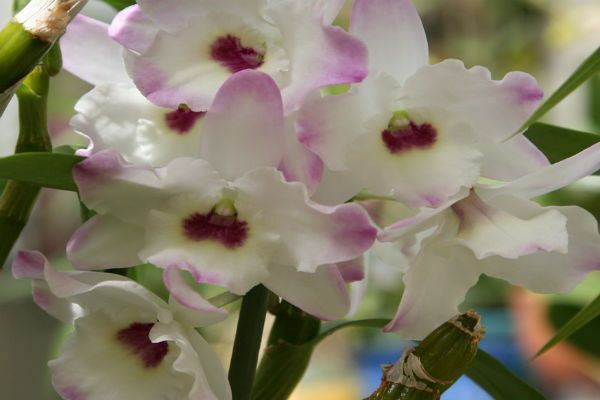 New daughter shoots of this plant appear after the death of the parent flower. Its roots are quite tough. Orchids have a straight stem with lanceolate leaves. The flower bud grows from the sinuses. It produces beautiful flowers in large quantities. Their colors can be quite diverse. There is a tricolor coating.
New daughter shoots of this plant appear after the death of the parent flower. Its roots are quite tough. Orchids have a straight stem with lanceolate leaves. The flower bud grows from the sinuses. It produces beautiful flowers in large quantities. Their colors can be quite diverse. There is a tricolor coating.
Orchid Zigopetalum
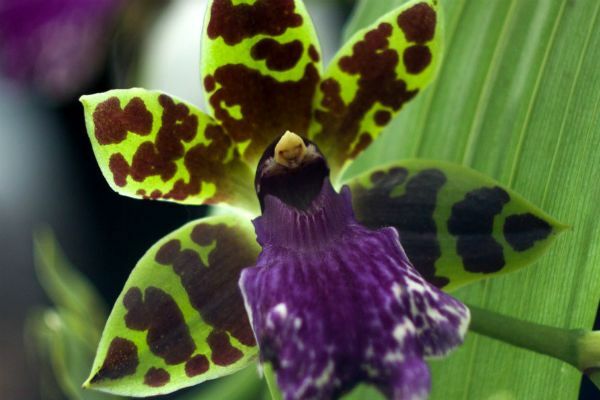
On the oval pseudobulb of this plant, a pair of almost half-meter fold leaves of a yellow-green hue grow. They have a lanceolate form. Half a meter pedicel of the plant appears at least 8 colors, their diameter reaches 7 cm. The color is heterogeneous, with the presence of yellow, brown, blue hues. Flowers exude a pleasant fragrance.
to contents ^Orchid Cumbria
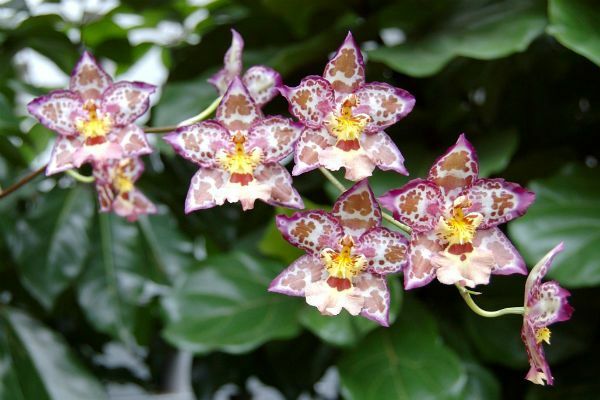
A complex hybrid designed for growing at home. On the spindle-shaped pseudobulb 2-3 dark-green leaves grow. They are close enough to each other and reach a length of half a meter. Bulba throws out 1-2 peduncles with many small flowers. When they fade, the bulb is removed, and a new one appears in its place. The plant blooms red with speckles, the diameter of which reaches 10 cm.
Orchid Catassetum
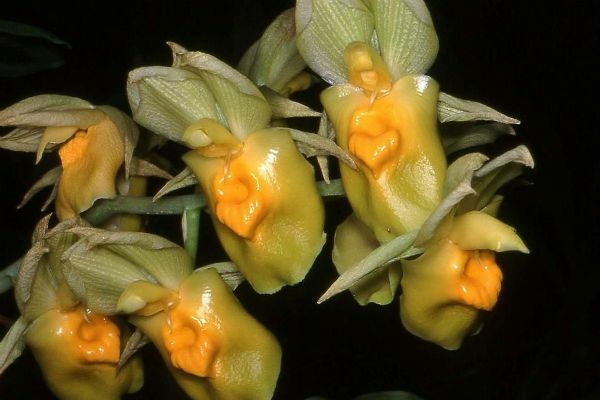
A creeping stalk - rhizome - grows from the cluster bulb of the flower. He trails along the surface of the soil. Therefore, new bulbs are located quite close to the old ones. The leaves of the plant are quite numerous. On one flower there are 3-7 pairs. Female flowers on orchids are less than masculine. They are less attractive and much smaller. Male flowers in most species of this plant are deployed upside down, that is, rezupinirovany. They are more complex and vivid than women's flowers.
to the table of contents ^Orchid Cattleya
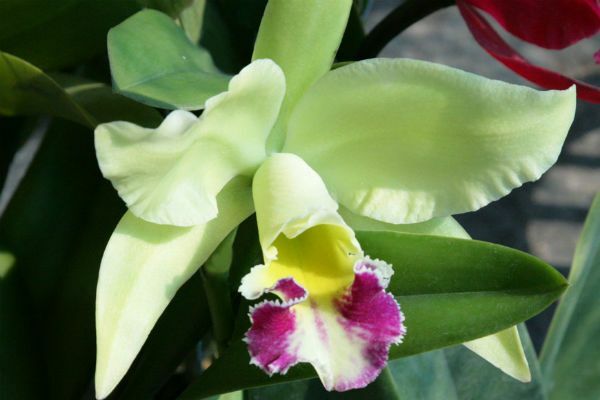
The new shoots of this flower grow from the base of the old one, which then dies. Long pseudobulbs of the plant have a spindle-like or cylindrical shape. There are flowers with one or two sheets. They are hard, fleshy, bessheretchkovye, light green color. On the peduncle of the plant, 1-3 large flowers are formed. Their petals are oblong, lanceolate, lip three-lobed. There are flowers of red, lilac, white shades.
to the table of contents ^Orchid Lelia
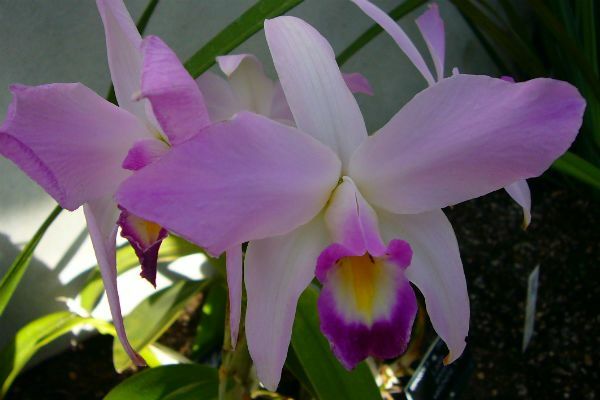
When old shoots of these flowers die, new shoots appear in their place. The plant forms creeping ground stems. Depending on the species, there are plants with a height of only 1 cm, and orchids reaching 60 cm. On the pseudobulb grows 1 or 2 elongated leaves. There are plants with little-flowered racemose inflorescences or only one large flower. Their color varies from white to purple.
to the table of contents ^Orchid Likasta
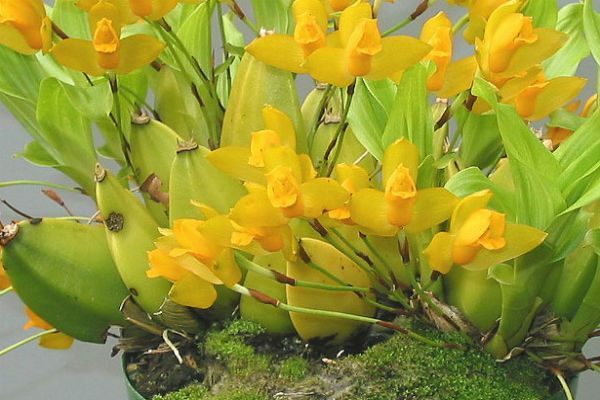
Flattened, ovoid, short bulbs of plants discard elongated folded leaves. From their base flower stems grow, on which one flower appears. Their shades are quite diverse: white, orange, pink, yellow-green. They exude a pleasant fragrance.
to the table of contents ^Orchid Ludisia
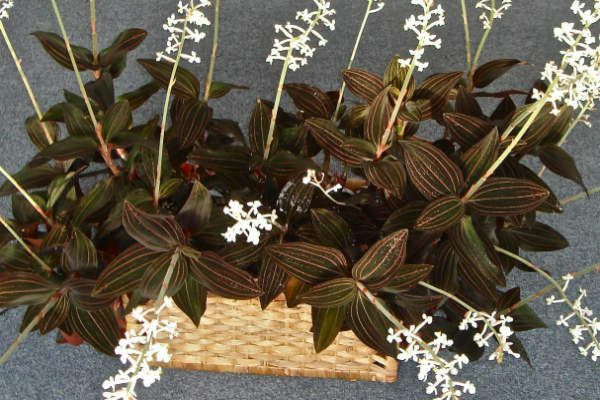
Creeping stems of this plant are rather branched and fleshy. They practically lie on the surface of the soil. From them vertical shoots, reaching 15 cm. The velvety, broadly lanceolate, regular leaves have a bright saturated surface. Their color from emerald to almost black is diluted with light veins. The length of the peduncle of the plant reaches 25 cm. Many fine white flowers are formed on them.
to the table of contents ^Orchid Macodes
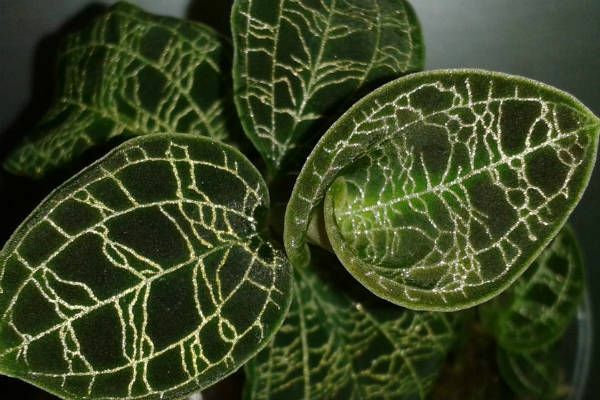
This plant attracts not by its flowers, but by very interesting and beautiful leaves. Their green surface seemed to be embroidered with skillful hands of the craftsman, and as a material, copper, gold and silver threads were used. The flowers of the plant are small and unattractive, with a red-brown hue and a white lip.
to contents ^Orchid Miltassia
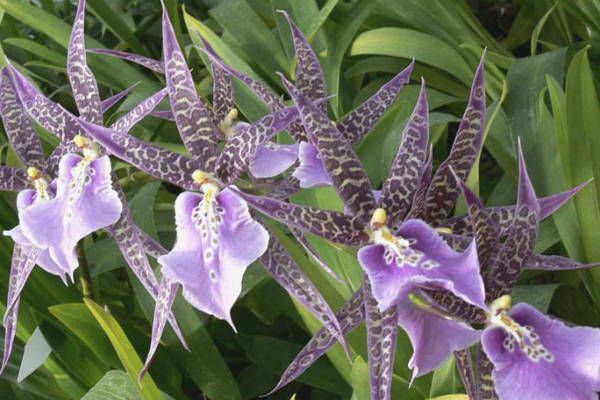
A hybrid flower with an elongated pseudobulb, reaching a height of 10 cm. From its top and base, paired lanceolate-like leaves grow. When the bulb is not yet fully formed, it throws out two peduncles. They form several star-shaped colors, the number of which can reach 10 pieces. Their colors are diverse and heterogeneous. In size flowers reach 15 cm.
to the table of contents ^Orchid Miltonia
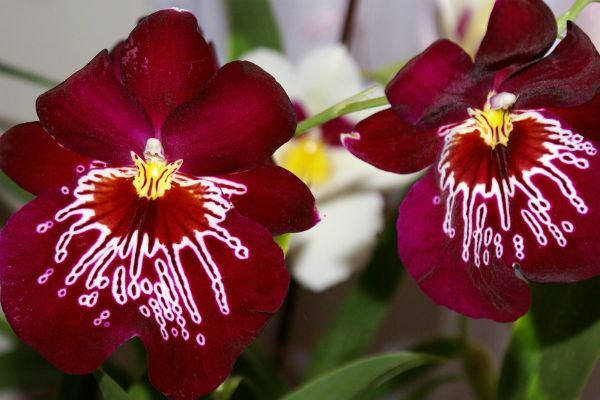
The flower is often used for growing hybrids. Because of their appearance, they are also called pansies. The name of the flower was given in honor of Adlajder Milton, the collector of orchids. Their small false bulbs discard several flower stalks at the same time. Their heterogeneous coloring looks very nice. Pink, yellow, white shades are diluted with spots of different shapes.
to contents ^Orchid Odontoglossum
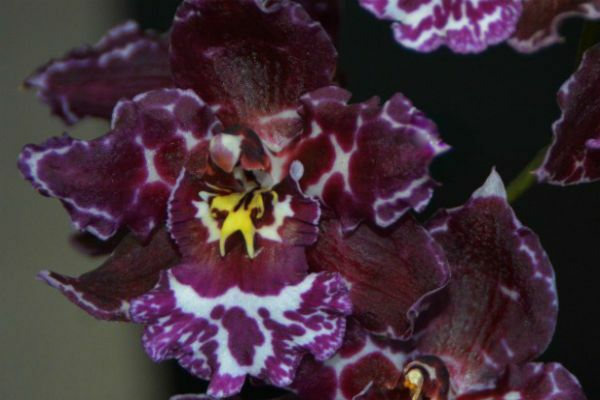
The flattened pseudobulbs of this plant are covered with leaf-like scales. Of these, 1-3 leaves grow. Under favorable conditions, some plant species can up to 12 peduncles. They form several large flowers, which are able to completely hide underneath the rest of the flower. Other varieties of orchid odontoglossum may have smaller flowers. For all species are characterized by various heterogeneous shades of colors: white, purple, reddish-brown.
to contents ^Orchid Oncidium
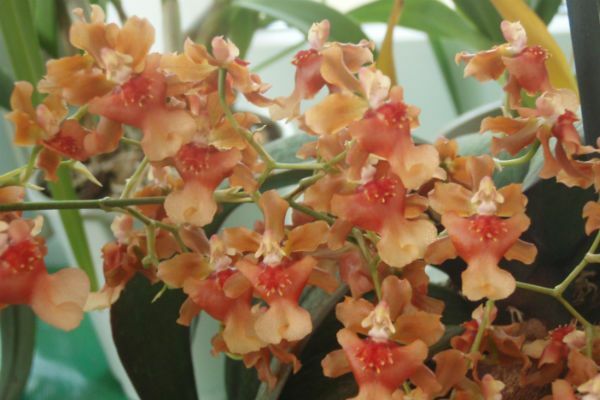
The air roots of this plant species are covered with a porous substance. He has short surface shoots. From the bulb grows 1-3 long and 2 short basal leaves, which gradually die off. At high peduncles of orchids, paniculate inflorescences of yellow, white, pink hues are formed.
to the table of contents ^Orchid Paphiopaddy( Shoe)
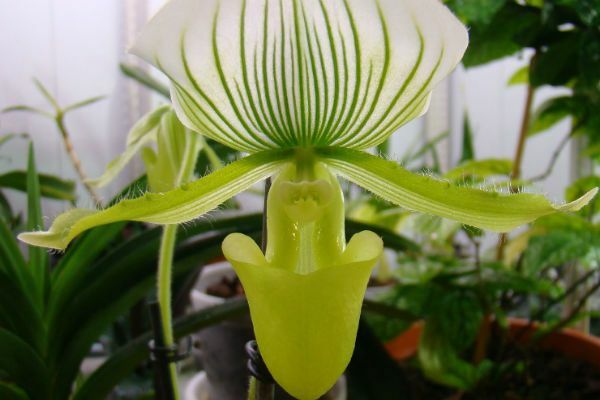
This plant is characterized by flowers in the form of a shoe, as indicated by its second name. The name Pafiopedilum is of Greek origin. Pafio - the name belonging to Venus - the goddess of beauty. Pedilum in translation means a slipper. The plant does not have bulbs, but grows from the root. At its base, you can see a rosette of dark green leaves. From it grows a stem with one single large wax flower. Its color can be green, red, yellow.
to the table of contents ^Orchid Ghost. Polyester
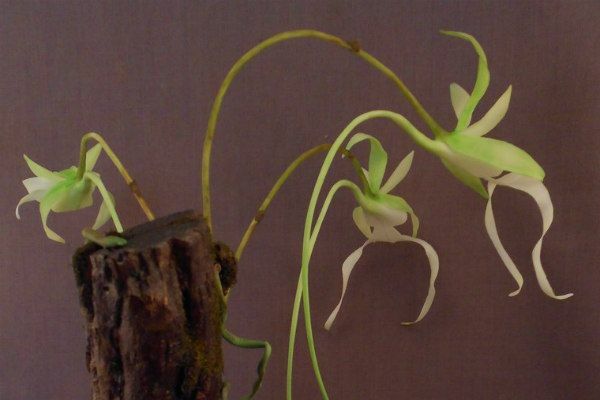
This plant was called a ghost, because it is difficult to see in the forest. All its parts, except for the flowers, are hidden from the human eye. Therefore bud seems to be a ghost from nowhere. This is one of the most fanciful species of orchids, which in captivity do not live more than a year. His white flowers grow on a thin leafless stem.
to contents ^Orchid Phalaenopsis
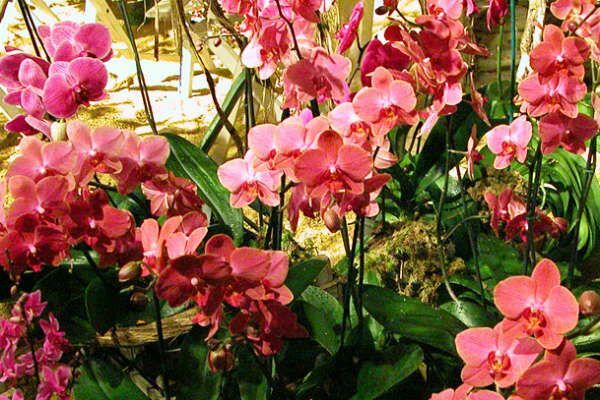
The name of the plant, due to its similarity to the winged insect, means "like a butterfly".The flower grows from the stem, forming leaves of various shapes and lengths for a particular kind of orchids. Their color extends from dark to light shades of green. The surface of the leaves is covered with red-brown spots. Uneven colors of its colors range from purple to white. They can see contrasting spots, streaks, dots.
to the table of contents ^Orchid Fragmipedium
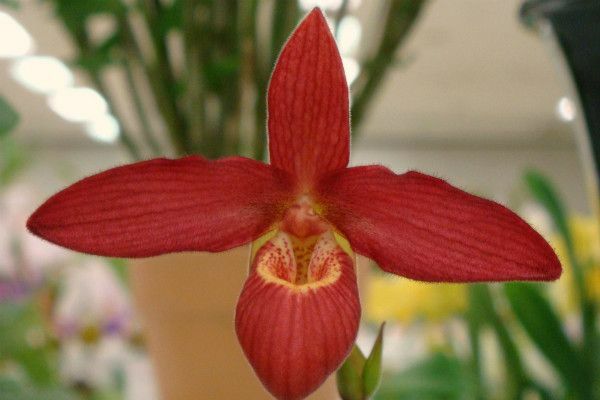
The plant consists of sockets-rosettes, which are formed by green leaves of orchids and reach a length of 80 cm. Tsvetonos throws out 7-10 flowers, they bloom gradually. When one completes its cycle, the other just starts it. The first flower blossoms. The maximum length of the peduncle is up to a meter. The diameter of the brown-green flowers can reach 22 cm.
to the table of contents ^Orchid Cologin
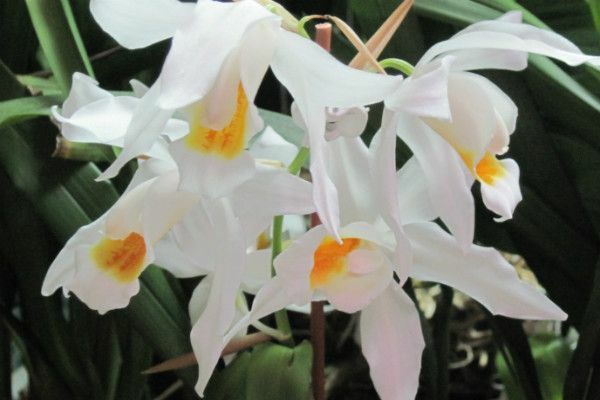
From the smooth pseudobulb of the oval form of this flower grows 1-2 sheets of bright green color. Quite long peduncles are formed from the base of the bulb. They carry a few beautiful flowers with five petals. Depending on the species, they may have a white or yellow-green non-uniform color.
to contents ^Orchid Cymbidium( classical)
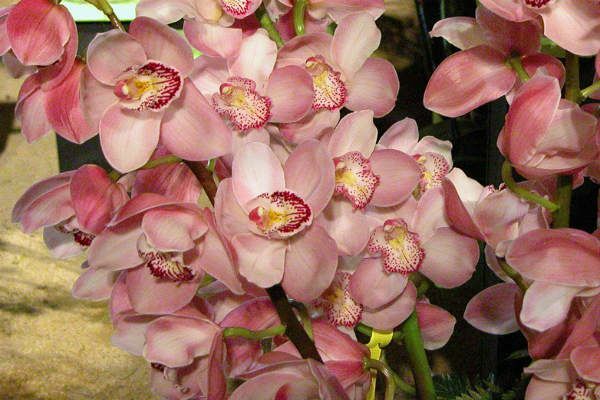
The oval pseudobulbs of this flower fit tightly to each other. Of these, leathery, pointed leaves grow. The flower spike can be either dangling or straight. It is covered with fragrant flowers, the size of which can reach 12 cm. Their color is quite diverse. There are red, green, cream and other orchids of Cymbidium.
to contents ^Orchid Cymbidium( black)
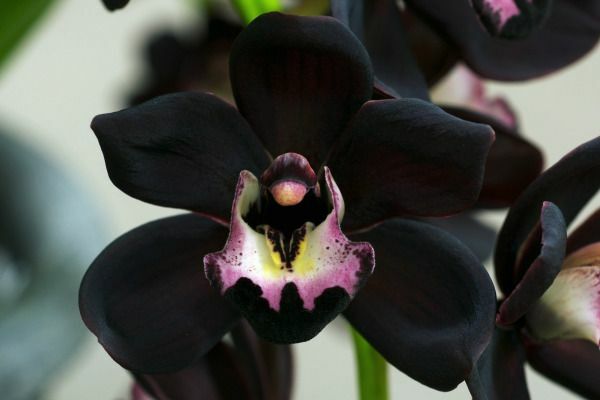
This is a fairly rare species of orchids, bred in California. It is similar to the usual tsimbiliumom, but its flower is saturated black in color. Against this background, a bright lip is prominent. The flower has a pleasant, spicy and rich vanilla flavor.
to contents ^Orchid Epidendrum
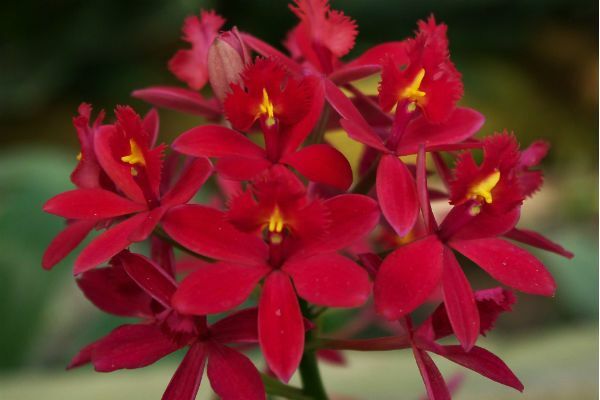
The appearance of representatives of this genus can be very different. But there are general characteristics: branched, creeping shoots, stiff, thick leaves, multi-flowering apex peduncles. The maximum size of brightly colored flowers is 14 cm, the smallest plants do not exceed 1 cm.
Of course phalaenopsis! The rest of the species in our small district town I did not meet on sale. I have five of them at home, including Phalaenopsis mini. All blossom almost the whole year, 2 months rest and again blossom. Care minimal.

I love orchids very much. My addiction to these exotic plants is known to all my friends, and every year for my birthday by March 8, they give me orchids. Certainly blooming. But no matter how I try to achieve a second flowering, I can not get it. I'm interested in: what kind of orchids can bloom repeatedly in a normal apartment?